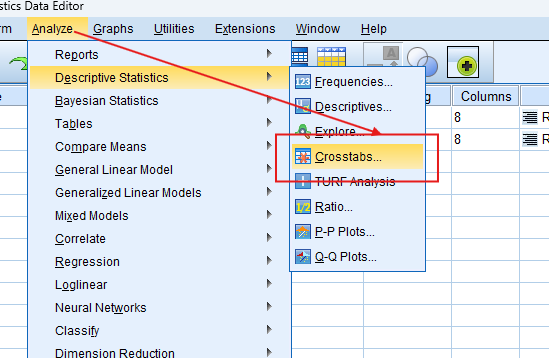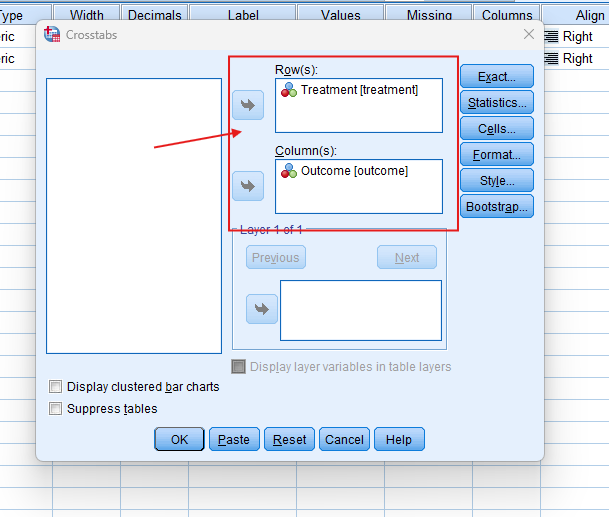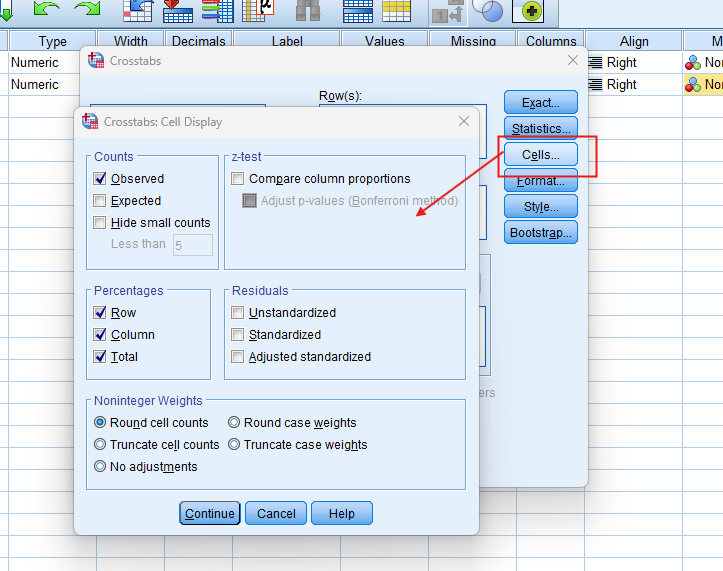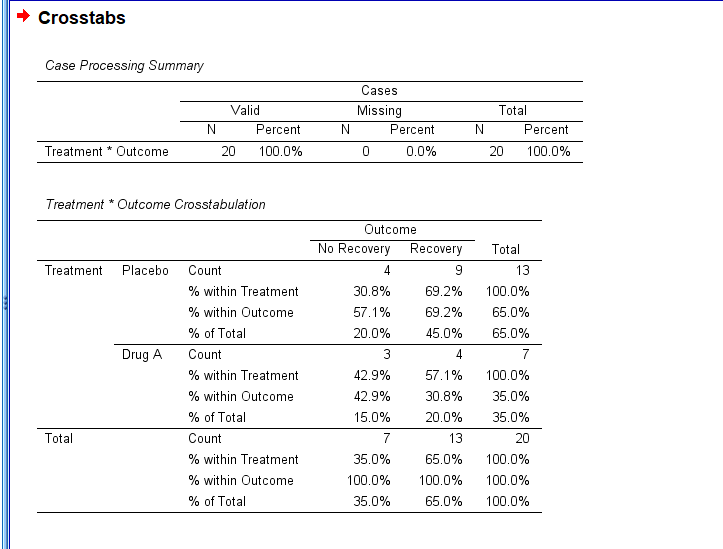Fisher's Exact Test
Discover the Fisher’s Exact Test in SPSS! Learn how to perform, understand SPSS output, and report results in APA style. Check out this simple, easy-to-follow guide below for a quick read!
Struggling with the Fisher’s Exact Test in SPSS? We’re here to help. We offer comprehensive assistance to students, covering assignments, dissertations, research, and more. Request Quote Now!
1. Introduction
Fisher’s Exact Test is a statistical method that assesses the association between two categorical variables in small sample sizes. Unlike the Chi-Square test, which relies on approximations, Fisher’s Exact Test calculates the exact probability of observing the data under the assumption of no association between variables. This makes it especially useful when one or more expected cell frequencies in the contingency table are less than 5.
In this blog post, we will explore Fisher’s Exact Test, its application in SPSS, and how to interpret its results. Whether you’re working with small samples or analyzing 2×2 tables, this test is an excellent tool for producing accurate and reliable results.
2. What is the Fisher’s Exact Test in Statistics?
Fisher’s Exact Test is a non-parametric statistical test used to examine the association between two categorical variables in a contingency table, typically when the sample size is small or when expected frequencies in any cell are less than 5. The test works by calculating the exact probability of the observed frequencies under the null hypothesis of no association between the variables.
We use the test when the assumptions of the Chi-Square Test are not met. It is ideal for 2×2 contingency tables but can also be used for larger tables. Fisher’s Exact Test ensures accurate results regardless of sample size, making it valuable in fields such as biology, medicine, and social sciences.
3. What is the Formula for the Fisher’s Exact Test?
The formula for Fisher’s Exact Test for a 2×2 contingency table is:
Where:
- a, b, c, d represent the frequencies in the cells of a 2×2 table.
- N is the total number of observations.
- ! denotes the factorial function.
This formula computes the exact probability of observing a given distribution of data in the contingency table, assuming that the row and column totals are fixed under the null hypothesis.
4. What is the Fisher’s Exact Test used for?
Fisher’s Exact Test is commonly used when researchers need to determine whether there is a significant association between two categorical variables in a small sample. This test is most suitable for 2×2 contingency tables where the expected frequencies are too low to meet the assumptions of the Chi-Square test. For example, it is very suitable for clinical trials when analyzing the effectiveness of a new treatment versus a placebo.
The test is widely used in fields such as biology, healthcare, and social sciences. It provides a precise p-value, allowing researchers to confidently assess the significance of the association between two variables even when sample sizes are limited.
5. Explain Differences among Chi-Square Tests of Independence, Goodness Fit, Association, Fisher’s Exact, and Homogeneity
- 1. Chi-Square Test for Association: Determines if two categorical variables are associated or independent by comparing observed and expected frequencies in a contingency table.
- 2. Chi-Square Test of Independence: Similar to the test for association, it assesses whether two variables are independent. The key difference lies in the context of the research question, with independence tests often focusing on whether the distribution of one variable is unaffected by the other.
- 3. Chi-Square Goodness-of-Fit Test: Compares observed frequencies of a single categorical variable to a theoretically expected distribution. Researchers use it to determine if a sample fits a specific distribution.
- 4. Chi-Square Test of Homogeneity: Tests whether two or more groups are homogeneous in terms of the distribution of a categorical variable. This test is used to compare the proportions across different populations.
- 5. Fisher’s Exact Test: Fisher’s Exact Test is an alternative to the Chi-Squared test for 2×2 contingency tables, especially when sample sizes are small or when expected frequencies are less than 5. Unlike the Chi-Squared test, Fisher’s Exact Test provides an exact p-value, making it more accurate when dealing with small or sparse data.
6. What are the Assumptions of the Fisher’s Exact Test?
Fisher’s Exact Test requires the following assumptions:
- Data must be categorical.
- Variables must be independent (i.e., the observation in one category does not affect the others).
- Table must have fixed row and column totals.
- Sample size can be small, and expected frequencies in cells can be less than 5.
- The test is most commonly used for 2×2 contingency tables but can be applied to larger tables.
Meeting these assumptions ensures that Fisher’s Exact Test produces valid and reliable results.
7. What is the Hypothesis of the Fisher’s Exact Test?
The hypotheses for Fisher’s Exact Test are as follows:
- Null Hypothesis (H₀): There is no association between the two categorical variables. In other words, the proportions in one variable are independent of the proportions in the other.
- Alternative Hypothesis (H₁): There is an association between the two categorical variables. The proportions of one variable depend on the proportions of the other.
Rejecting the null hypothesis indicates a significant association between the variables.
8. An Example of the Fisher’s Exact Test
Imagine a clinical study where researchers want to determine whether a new drug (Drug A) is more effective than a placebo in treating a specific condition. The two categorical variables are treatment group (Drug A vs. Placebo) and outcome (Recovery vs. No Recovery). The sample size is small, with only 20 participants in total, and some of the expected frequencies are below 5.
We perform the Fisher’s Exact Test to examine the association between treatment and outcome. Since the sample size is small and the assumptions of the Chi-Square Test are not met, this test provides a precise calculation of the probability of observing this data under the null hypothesis.
Step by Step: Running Fisher’s Exact Test in SPSS Statistics
Let’s embark on a step-by-step guide on performing the Fisher’s Exact Test using SPSS
- STEP: Load Data into SPSS
Commence by launching SPSS and loading your dataset, which should encompass the variables of interest – a categorical independent variable. If your data is not already in SPSS format, you can import it by navigating to File > Open > Data and selecting your data file.
- STEP: Access the Analyze Menu
In the top menu, click on Analyse > Descriptive Statistics > Crosstabs.
- STEP: Specify Variables
- Assign one variable to the row and the other to the column in the crosstabs dialogue box.
- Choose Chi-Squared: Click on the Statistics button, and select Chi-square to include the test in your output.
- Check Expected Counts: Enable the expected counts to compare observed and expected values.
- STEP: Generate SPSS Output
- Click ‘OK’ after selecting your variables and method. SPSS will run the analysis and generate output tables and survival curves.
Note: Conducting the Fisher’s Exact Test in SPSS provides a robust foundation for understanding the key features of your data. Always ensure that you consult the documentation corresponding to your SPSS version, as steps might slightly differ based on the software version in use. This guide is tailored for SPSS version 25, and for any variations, it’s recommended to refer to the software’s documentation for accurate and updated instructions.
SPSS Output for Fisher's Exact Test
10. How to Interpret SPSS Output of Fisher’s Exact Test
SPSS will generate output, including the Crosstabulation Table, and Chi-Square Tests.
- Chi-Squared Test Table: This table provides the Chi-Square statistic, degrees of freedom (df), and the p-value. If the p-value is less than the chosen significance level (commonly 0.05).
- Crosstabulation Table: This table presents the observed and expected frequencies for each category combination of the two variables. You can also examine row and column percentages to understand the distribution of responses within each category.
11. How to Report Results of Fisher’s Exact Test in APA
Reporting the results of Fisher’s Exact Test in APA (American Psychological Association) format requires a structured presentation. Here’s a step-by-step guide in list format:
- Introduction: Briefly describe the purpose of the analysis and the theoretical background.
- Method: Detail the data collection process, variables used, and the model specified.
- Results: Present the parameter estimates with their standard errors, and significance levels.
- Figures and Tables: Include relevant plots and tables, ensuring they are properly labeled and referenced.
- Discussion: Interpret the results, highlighting the significance of the findings and their implications.
- Conclusion: Summarise the main points and suggest potential areas for further research.

Get Support For Your SPSS Data Analysis
Embark on a seamless research journey with SPSSAnalysis.com, where our dedicated team provides expert data analysis assistance for students, academicians, and individuals. We ensure your research is elevated with precision. Explore our pages;
- Biostatistical Modeling Expert
- Statistical Methods for Clinical Studies
- Epidemiological Data Analysis
- Biostatistical Support for Researchers
- Clinical Research Data Analysis
- Medical Data Analysis Expert
- Biostatistics Consulting
- Healthcare Data Statistics Consultant
- SPSS Help by Subjects Area: Psychology, Sociology, Nursing, Education, Medical, Healthcare, Epidemiology, Marketing
Connect with us at SPSSAnalysis.com to empower your research endeavors and achieve impactful data analysis results. Get a FREE Quote Today!









